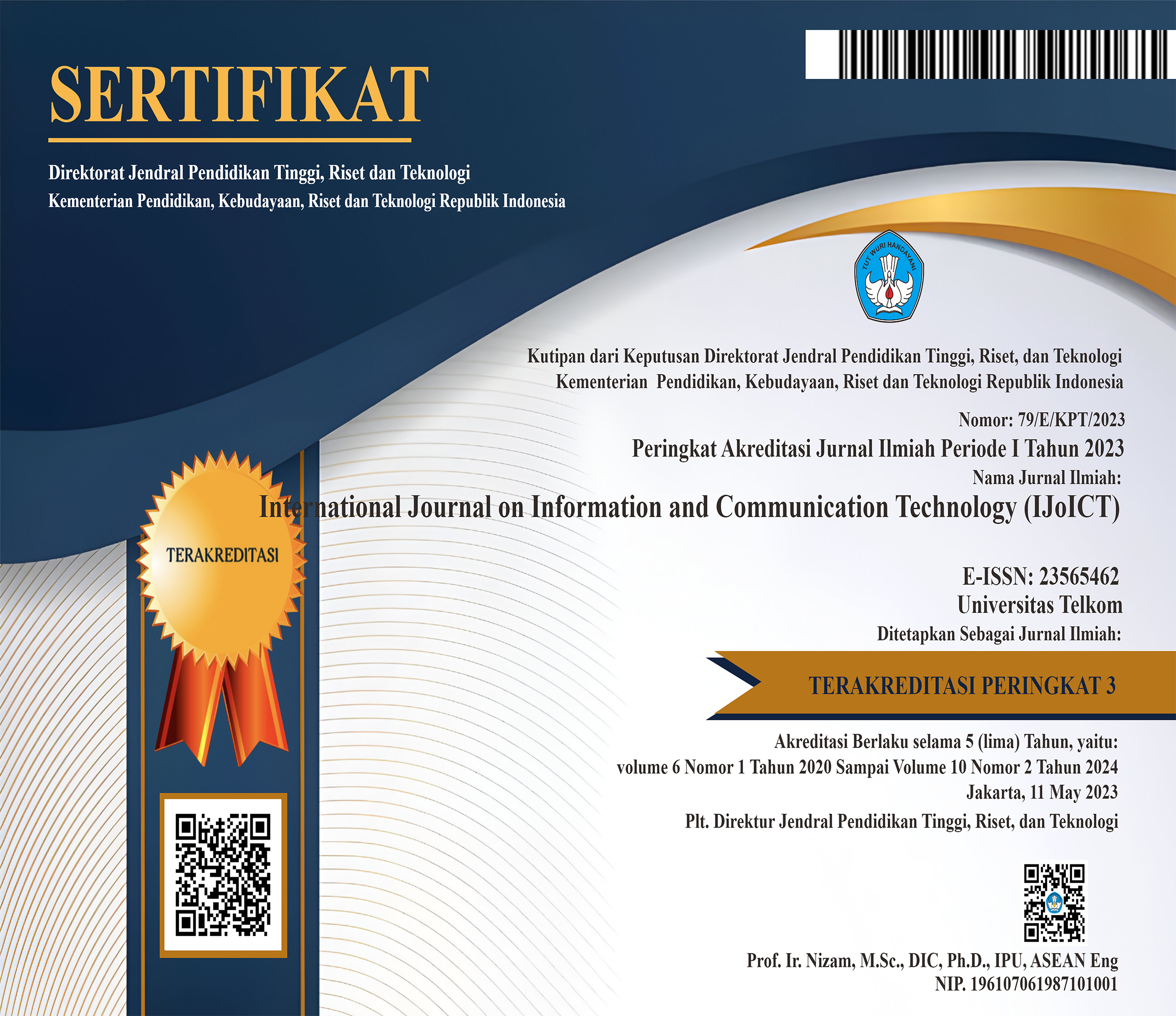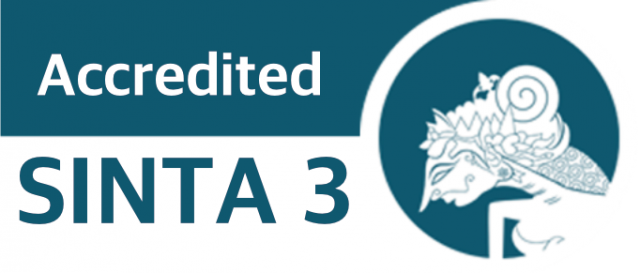Tone Classification Matches Kodà ly Handsign with the K-Nearest Neighbor Method at Leap Motion Controller
 Abstract views: 246
,
Abstract views: 246
,
 PDF downloads: 206
PDF downloads: 206
Abstract
Hands can produce a variety of poses in which each pose can have a meaning or purpose that can be used as a form of communication determined according to a general agreement or who communicate. Hand pose can be used as human interaction with the computer is faster, intuitive, and in line with the natural function of the human body called Handsign. One of them is Kodà ly Handsign, made by a Hungarian composer named Zoltán Kodály, which is a concept in music education in Hungary. This hand sign is used in interactive angklung performances in determining the tone that will be played by the K-Nearest Neighbor (KNN) algorithm classification process based on hand poses. This classification process is performed on the extracted data from Leap Motion Controller, which takes Pitch, Roll, and Yaw values based on basic aircraft principle. The results of the research were conducted five times with the value of k periodically 1,3,5,7,9 with test data consisting pose of 874 Do', 702 Si, 913 La, 612 Sol, 661 Fa, 526 Mi, 891 Re, and 1004 Do punctuation on 21099 training data. The test results can recognize hand poses with the optimal k value k=1 with an accuracy level of 94.87%.
Downloads
References
M. Croassacipto, M. Ichwan, and D. B. Utami, “Klasifikasi Nada Sesuai Kodà ly Handsign Dengan Metode K-Nearest Neighbor Pada Leap Motion Controller,†Indones. J. Comput., 2019, doi: 10.21108/indojc.2019.4.1.269.
D. B. Utami and M. Ichwan, “Pengenalan Pose Tangan Menggunakan HuMoment,†J. INFOTEL, 2017, doi: 10.20895/infotel.v9i1.177.
S. J. Reyadh Naoum, Hussein H. Owaied, “Development of a new Arabic Sign Language Recognition Using K-Nearest Neighbor Algorithm,†J. Emerg. Trends Comput. Inf. Sci., 2012.
M. Billinghurst, T. Piumsomboon, and H. Bai, “Hands in space: Gesture interaction with augmented-reality interfaces,†IEEE Comput. Graph. Appl., 2014, doi: 10.1109/MCG.2014.8.
C. Keskin, F. Kiraç, Y. E. Kara, and L. Akarun, “Real time hand pose estimation using depth sensors,†in Proceedings of the IEEE International Conference on Computer Vision, 2011, doi: 10.1109/ICCVW.2011.6130391.
L. Chosky, The Kodaly method I: comprehensive music education. New Jersey: Upper Saddle River, NJ: Prentice, 1999.
F. Weichert, D. Bachmann, B. Rudak, and D. Fisseler, “Analysis of the accuracy and robustness of the Leap Motion Controller,†Sensors (Switzerland), 2013, doi: 10.3390/s130506380.
“Leap Motion Controller.†[Online]. Available: https://developer.leapmotion.com/documentation.
“Leap Motion Forum.†[Online]. Available: https://forums.leapmotion.com.
M. Mohandes, S. Aliyu, and M. Deriche, “Arabic sign language recognition using the leap motion controller,†in IEEE International Symposium on Industrial Electronics, 2014, doi: 10.1109/ISIE.2014.6864742.
D. Yuristiawan, “Identifikasi Kualitas Daging Sapi Berbasis Android Dengan Ekstraksi Fitur Warna Dan Klasifikasi KNN,†Universitas Dian Nuswantoro., 2015.

This work is licensed under a Creative Commons Attribution 4.0 International License.
Manuscript submitted to IJoICT has to be an original work of the author(s), contains no element of plagiarism, and has never been published or is not being considered for publication in other journals. Author(s) shall agree to assign all copyright of published article to IJoICT. Requests related to future re-use and re-publication of major or substantial parts of the article must be consulted with the editors of IJoICT.








.png)

.jpg)




